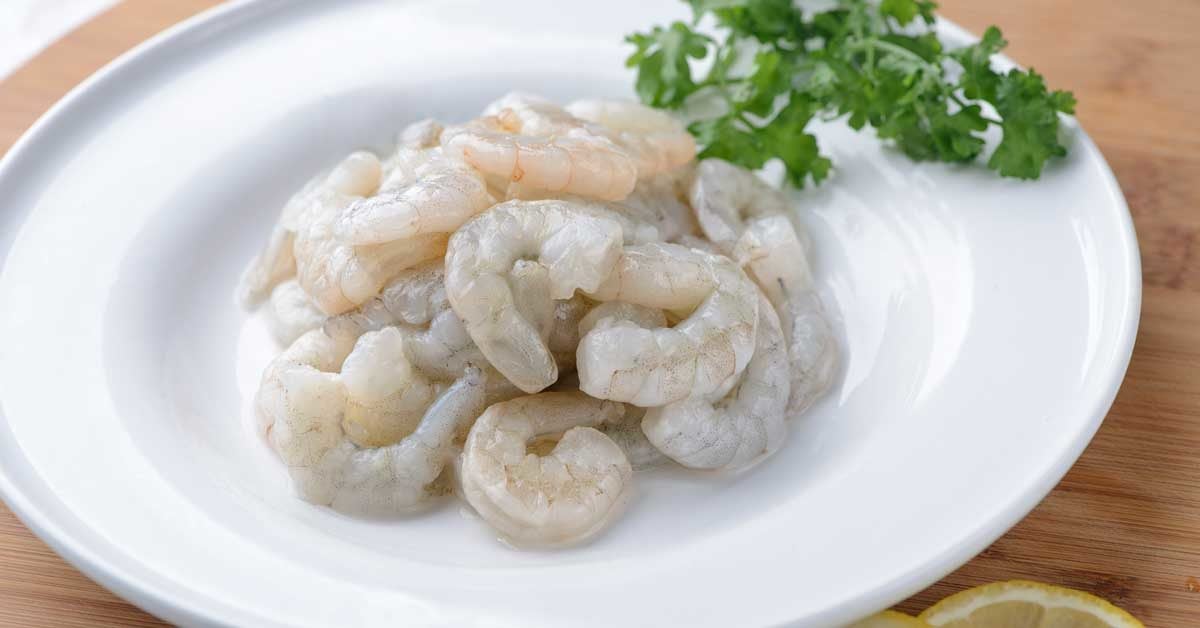Hey there, shrimp lovers! As a passionate food blogger who’s cooked thousands of shrimp dishes, I’m here to share everything you need to know about safe shrimp temperatures. Let’s dive right in with the most important info you’re looking for!
The Quick Answer
Shrimp is safe to eat when it reaches an internal temperature of 145°F (63°C), This is the FDA-recommended temperature that kills harmful bacteria while keeping the shrimp juicy and delicious
Why Temperature Matters for Shrimp Safety
When it comes to cooking shrimp getting the temperature right isn’t just about taste – it’s about safety too! Here’s why
- Raw or undercooked shrimp can harbor nasty bacteria and parasites
- Proper cooking temperature kills these harmful organisms
- The right temp also gives you that perfect texture (no one likes rubbery shrimp!)
How to Tell When Shrimp is Safely Cooked
Visual Cues
While a thermometer is most reliable here are some visual signs your shrimp is done
- Color changes from gray to pink with red tails
- Flesh becomes opaque (not translucent)
- Forms a “C” shape (if it’s a tight “O” shape, it’s overcooked!)
Using a Food Thermometer
For best results:
- Insert thermometer into thickest part of shrimp
- Wait for reading to stabilize
- Look for 145°F (63°C)
Different Cooking Methods and Safe Temperatures
Here’s a handy table for different cooking methods:
| Cooking Method | Temperature | Approximate Cook Time |
|---|---|---|
| Boiling | 145°F | 2-3 minutes |
| Sautéing | 145°F | 3-4 minutes |
| Grilling | 145°F | 4-6 minutes |
| Steaming | 145°F | 4-5 minutes |
| Baking | 145°F | 10-12 minutes |
Tips for Perfect Shrimp Every Time
-
Don’t Overcrowd the Pan
- Give those little guys some space!
- Overcrowding = uneven cooking
-
Watch the Size
- Bigger shrimp need more cooking time
- Adjust temps based on size
-
Proper Thawing
- Never thaw at room temperature
- Use cold water or refrigerator method
Common Mistakes to Avoid
We’ve all been there! Here are some oopsies to watch out for:
- Cooking frozen shrimp without thawing
- Using warm water to thaw (big no-no!)
- Relying only on color to check doneness
- Forgetting to use a thermometer
Safety Tips for Different Shrimp Preparations
Grilled Shrimp
- Preheat grill to medium-high heat
- Use skewers to prevent falling through grates
- Check temp in thickest part
Boiled Shrimp
- Bring water to rolling boil
- Add shrimp carefully
- Start timing when water returns to boil
Sautéed Shrimp
- Heat pan before adding shrimp
- Single layer only
- Check temp after flipping
FAQ Section
Q: Can I eat shrimp at lower temperatures?
A: While some chefs cook shrimp to 120°F-140°F, we recommend 145°F for safety, especially for pregnant women, elderly, or those with weak immune systems.
Q: What happens if I overcook shrimp?
A: Overcooked shrimp becomes tough and rubbery – nobody wants that! They’ll curl into tight O-shapes instead of gentle C-shapes.
Q: How can I tell if my shrimp has gone bad?
A: Trust your nose! Bad shrimp smells like ammonia. Also look for slimy texture or discoloration.
Storage and Leftovers
Keep your cooked shrimp safe:
- Refrigerate within 2 hours of cooking
- Store at 40°F or below
- Use within 3-4 days
- Reheat to 165°F
The Bottom Line
Getting shrimp to the safe temp of 145°F isn’t just about following rules – it’s about serving up delicious, safe seafood that everyone can enjoy! With these tips and tricks, you’ll be a shrimp-cooking pro in no time.
Remember, when in doubt, use that food thermometer! It’s better to take a few extra seconds to check than to serve unsafe food to your family and friends.
Happy cooking, seafood lovers! Drop me a comment below if you’ve got any questions about cooking shrimp safely – I’m always here to help!

Using a Food Thermometer for Accurate Results
To accurately measure the internal temperature, consider using a food thermometer. It’s easy enough – simply insert it into the thickest part of the shrimp until you reach the desired reading. Remember, properly cooked shrimps turn pink with red tails – another good indicator they’re ready.
Sautéing Methods That Enhance Flavor
Sautéing is another popular way to prepare shrimp. This technique involves quickly frying them in a small amount of hot- usually butter or oil in a sauté pan over high heat. It’s important not only that the pan reaches proper temperature but also seasoning plays a vital role here. Sautéed shrimp recipes often include garlic, butter, and herbs which enhance their natural flavors while providing delightful aroma enhancing overall culinary experience.
- Pan Heat: Ensure the pan reaches the right temperature before adding shrimps.
- Fat Choice: Use butter or olive oil depending upon recipe requirements.
- Seasonings: Garlic, herbs, etc. add extra depth to the taste profile.
